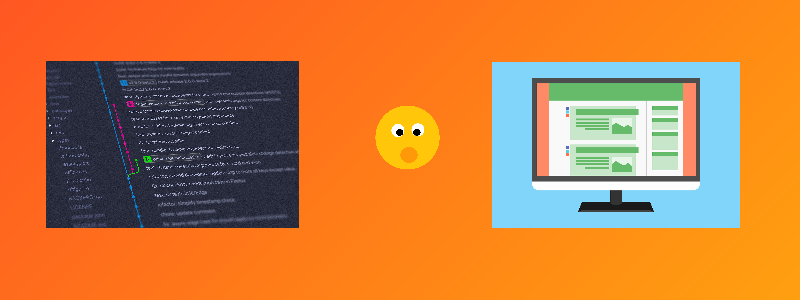Wordpress SEO Tutorial Search Engine Ranking checklist 2020 [improve wordpress search engine ranking 2020]
 WordPress is ready to accept search engines right after installation. Its features and functions provide the search engines with all the necessary information, allowing them to sequentially view posts, pages and categories. Everything has been done so that the search engine can collect the necessary information and include it in its database.
WordPress is ready to accept search engines right after installation. Its features and functions provide the search engines with all the necessary information, allowing them to sequentially view posts, pages and categories. Everything has been done so that the search engine can collect the necessary information and include it in its database.WordPress includes several built-in search engine optimization tools, for example, it can use the .htaccess file to create static links called permalinks. There are also a number of other modules and hacks that can be used for search engine optimization (SEO).
However, once you start using various WordPress themes and WordPress settings to suit your needs, you can break down some of these useful features that make WordPress search engine friendly. The following are some useful tips for maintaining optimal search engine friendliness.
1. Keeping Nice, clean code.

Check your site for errors in HTML code. Errors in the code may prevent the search engine from successfully reading the entire site.
2.The content on your site should “speak”
Search engines cannot "see" the site. They can only "read" it. The external beauty of the site does not provide any information about it to search engines. Words, by contrast, are very important to search engines. For them, the content and materials on your site are important with which you explain, share, inform, educate and just babble. Make sure that you have quality content, consisting of words, for search engines so that they can compare it with all parts of the site and study as necessary, then your site will be in good standing.
3.Write your articles, remembering about search engines
How do you find information on the Internet? If you write something and want it to be “found” on the Internet, think about words and phrases that other people could use to find your information. Use these words more than once during writing, but not in every paragraph. Learn how search engines crawl your materials, evaluate and classify the knowledge gained, so you can help yourself to be on good terms with the search engines.
4.Content at the beginning
A search engine visits your site and, in most cases, ignores styles and CSS. She simply plows through the entire site, collecting content and information. The design of most WordPress themes is made so that the content is as close as possible to the top of the page, and sidebars and footers are pressed to the bottom of the site. Several search engines crawl about a third of the page, and then move on. Make sure your theme places the main content at the top of the page.
5.Keywords, links, and headings match the content.
Search engines do not evaluate your site for beauty, but they evaluate words and pass them through a sieve, giving preference to certain words and combinations of words. Words found inside your document are compared with words placed in links and headings. The more matches, the higher your “score”.
6.Content in links and images
Your site may not store a lot of text, but mainly consist of photos and links, but there are still places where you can add text information. Search engines look at the alt and title attributes of links and images. While filling out these attributes makes your site more friendly, good content and the words in these attributes help create more content for search engines to digest.
7.Link Popularity

It's not about how good your site is, but how good sites that link to you are. These links hold the weight of the preferences that search engines give to a particular site. This is about who refers to you. Backlinks are built into WordPress. They help you link to other people, which gives them some benefit, but at the same time, it helps them link to you by connecting “links”. The number of links to your site that were found by Google can be found by registering your site in the webmaster of the search engine. Other options for getting inbound links to your site include:
Add the url of your site to your account on the forums of other sites.
Add your site to the directory (see below)
Note: the links in the comments will not affect something, because all modern blogs use the rel = "nofollow" attribute. Do not be a comment spammer.
8.Good navigation
A search engine crawls across your site, moving from page to page. Good links for navigating the categories, archives and various pages on your site are an invitation for the search engine to navigate gracefully from one page to another, following these links connecting the pages and thus the search engine will bypass most of the site.
9.Adding a site to the search engine
There are many resources that will “help” you add your site to the search engine. Some of them are free, some ask for money. Or you can manually add your site to the search engine yourself. Whatever method you use, once the site is checked for errors and is ready to run, search engines will welcome your WordPress site.
Here are some tips for successfully adding a site to a search engine:
- Make sure that the site has content for crawling by search robots. In general, let the site contain more than 10 different messages so that search engines receive enough material for study and evaluation.
- Do not add the same site to the search engine more than once a month, based on their criteria, and not on your anxious expectation when the search engine will read your site.
- Be prepared to print or copy and paste the site name and categories to which your site may belong in search engine listings.
- Make a list of the various links from your site in the format “addresses / URLs”. You can add a link to the home page as well as categories and feeds in the search engine, expanding the reach of your site’s search engines.
- Always have at hand a list of the various search engines and directories to which you added your site so that you don’t accidentally re-add data too soon, and you can track the dynamics of how they include your pages in search results.
10.Add Directory Sites
It is also useful to add your website to directories to increase traffic and search engine optimization. And general-thematic directories and specific, related only to the theme of your site, can be used.
MOZ.org is the most important directory. Its contents are licensed in the public domain. Content from this directory is also used in a way by almost all major search engines.
Other Resources for Website Optimization for Search Engines
Although WordPress has already been optimized for search engines, the following are more resources and information that you might be interested in learning to prepare your site for robots to visit search engines.
11.Meta tags
Meta tags store information that defines the purpose of your site, description and keywords used on your site. Meta tags are stored in the header, inside the header.php template file. By default, they are not included in WordPress. But you can manually enable them, it’s described in detail in the Meta Tags article in WordPress , this article will guide you through the whole process of adding meta tags to your WordPress site.
WordPress custom fields can also be used to include keywords and meta descriptions for posts and pages. There are a number of WordPress plugins that can also help you add meta tags and descriptions to your site, you can find them in the official WordPress plugin directory .
12.Robots.txt optimization.
Search engines read the file at yourdomain.com/robots.txt to get information about which pages they should index and which not.
Adding entries to robots.txt to improve SEO, a very popular misconception. Google says you can use robots.txt to block part of your site from search engines, but for now it’s preferable not to. Instead, use the noindex tag on each page to prevent indexing of poor-quality pages on your site.Google has advised avoiding this method in order not to block JS and CSS files, and the team responsible for improving search quality has been very active in proposing a transparency policy for webmasters to help Google make sure that we don’t hide something bad on our web site. site (“cloaking”) and do not refer to unsightly spam on pages blocked from indexing. Therefore, the ideal robots file.
WordPress only blocks a few JS files by default, but that’s pretty much the google guide.
13.Adding Feed
WordPress has built-in feeds that allow you to view your site through various feed readers. Many search engines currently accept feeds and there are many sites that specialize in feed directories and services.
To add your site’s feed, you need to know the link to the various feeds that your site is equipped with. In the article on feeds, you can learn about the various feed links that are built into WordPress.
14.Tags for Technorati
Technorati is "a real-time search engine that keeps track of what is happening in the blogosphere - this is the world of web blogs." It is written on their website that “Technorati monitors the number of links and the relevance of blogs, and also monitors the topic of blogs in real time. Due to the fact that Technorati automatically receives notification from blogs, it can track thousands of updates per hour, find out what is happening in the blogosphere, and control the community (who and who is referred to). ”
Technorati tags are used to categorize the various topics and information used by blogs. Technorati uses WordPress categories as tags automatically. You can add more tags of the form rel = "tag" to any link on your site.
Example:
<a href="http://wordpress.org/" rel="tag">WordPress</a>
<a href="http://bazzhood.wordpress.org/" rel="tag">wordpress</a>
There are a number of WordPress plugins for advanced use of Techno rate tags.
Permalinks
Permalinks are improvements to your standard URLs. They can also have a positive effect on website optimization for search engines by presenting the URL of your post, page or archive in a readable form.
Because search engines use links and headings as part of important information, links to posts and articles on your site become important if you use permalinks.
15.Sitemaps
A sitemap is the page on which a list of all the posts on your blog is located. It is intended for your visitors, so that they can get a good overview of your site and find information on the blog quickly, but it also gives great advantages in search engines, because a good link always points to all the entries in your blog. If there is a link to a site map on all your pages, visitors and search engines will easily find it and see all your messages.
Sitemap for google
Since June 2005, Google has been accepting a sitemap from users. You need to draw up a site map in a special format using XML, and add it through tools for webmasters.
ความคิดเห็น
แสดงความคิดเห็น